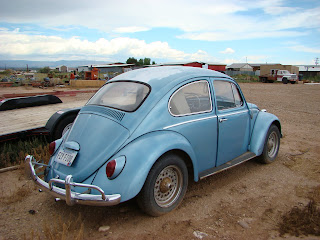Volvo 264:
The Volvo 264 was introduced in 1974 to replace the 164. It was based on the new 244 (which replaced the 144) but had a larger engine: a 2,664cc 90 degree V6 good for 148hp. This is where the car got its name: in Volvo language of the time, the 2 stood for the 200-series, the 6 for a six-cylinder engine and the 4 meant four doors. This car is important in the PRV’s history because it was the first production car to use the completely new engine. The PRV wasn’t the only collaboration between Renault and Volvo: the Volvo (ex-Daf) 66 GL used a 1,289cc four-cylinder pulled directly from the Renault 12 and mated to Daf’s innovative Variomatic transmission.
The PRV-equipped 264 had a more refined interior and more standard features than the 244 four banger but the body remained essentially the same, with the exception of specific rims and available extra chrome. The 200-series’ body didn’t shake the automotive world either; from the A-pillar back it was fairly similar to the outgoing 100-series, launched in 1966. The model was praised for its reliability and drivability but some accused the car of below average performance, with 0-60 taking 12.7 seconds. Starting in 1980 a 2,849 PRV was standard. While this didn’t change the car’s character, it gave the engine’s horsepower and torque a little boost. A four speed manual transmission with available overdrive was the standard way to transfer the power to the rear wheels. A three speed autobox was optional.
The 264 was also available as a wagon, the 265 (5 for five doors). This cavernous wagon was one of the largest and most-appreciated on the European market, along with the hydraulically-suspended Citroen CX Break.
An interesting variation of the 264 was the 262. If you have read attentively you’ll be able to decipher its name: it is the same as the 264 but with two doors. Based on a shortened 200 platform, this coupe was designed by Volvo and built by Bertone in Turin to complete against the big names from Germany, mainly Mercedes-Benz and BMW. They featured a more luxuriously appointed interior, a lower roofline, exterior colors that were not available on the standard 200 series and a price far superior to that of a standard 264. They featured a vinyl roof which was popular on the American market. 6622 of them were produced between 1977 and 1981 and handful of the last ones had the updated 2,849cc PRV under the hood.
Ambassadors, consuls, businessmen and families with lots of kids and money could order a 264TE, a 264 with 70 centimeters (27.5 inches) added to its wheelbase to make a limousine. The TE stood for Top Executive and this car had everything one would expect in a limousine: plush seats (“designed in co-operation with medical experts”, according to Volvo), air conditioning, a stereo volume control for the rear compartment, reading lamps for rear passengers, a row of jump seats and an available telephone in the rear armrest. The 3-speed automatic was standard in the TE.
Production of the 264 ended in 1982 and it was replaced by the 760 GLE, also equipped with a PRV. The 200-series was a commercial success and solidified Volvo’s reputation for building safe and near bomb proof cars.
262C advertisements that clearly indicate which clients Volvo marketed the car to:

A 262C in Erie, Pennsylvania:
 A 264GL in State College, Pennsylvania:
A 264GL in State College, Pennsylvania: A period photo of the 265GL:
A period photo of the 265GL:
 The 264 TE:
The 264 TE:

Talbot Tagora SX:
The Talbot name was revived by Peugeot after it purchased Chrysler’s European firms in late 1978. They made cars carried over from the Simca days, like the ex-Matra Simca Rancho, baptized the Talbot Matra Rancho, as well as cars based on Peugeots like the Talbot Samba, a cloned Peugeot 104.
When Peugeot took over the firms Chrysler was in the advanced stages of developing a large, luxurious sedan called the C9 internally that would compete against luxury offerings throughout Europe. This created an issue for Peugeot’s management because Chrysler had some of PSA’s cars in its crosshairs when designing the car, notably the unpopular Peugeot 604. In the works since 1976, Peugeot management decided it was too far in the development process to axe and reluctantly gave it the green light.
The C9 evolved into the Talbot Tagora, launched at the 1980 Salon de Paris and available from dealers starting in February 1981. Peugeot altered the Chrysler design in order to fit some of their own parts to it, including a rear axle borrowed from the 505. It had a surprising single spoke steering wheel reminiscent of a Citroen GSA and a relatively modern dashboard which, following the era’s trend, featured an ample amount of squares-shaped items. The Tagora also had an onboard computer which proved to be an incessant headache when it didn’t work but placed the Tagora ahead of its competition when it functioned properly.
The top of the range Tagora SX model had a carbureted 2,664cc PRV which was good for 165hp, compared with 136hp for its fuel injected half sister, the 604. This immediately made the Tagora SX the quickest French sedan available on the market. Less powerful versions had a Chrysler 2,155cc four-cylinder inherited from the old 180 and a 2,304cc four-cylinder turbo diesel also found in the Peugeot 504, 505 and 604. It had four-wheel independent suspension and rode quietly and smoothly like a sedan in this class should.
While this all sounded promising in theory it failed in application for a whole host of reasons. Some critics are quick to point out that the bland exterior styling didn’t enable it to stick out from its competition. It was boxy, granted, but most every car in the 1980s was boxy. It wasn’t any more or less boxy and bland than the 604 or the Ford Granada. The true reason why it failed can be found in the offices of PSA’s management. Peugeot saw the Tagora as a threat from day one and continued to do so until they pulled the plug on the car. They had every reason to: their 604 sold poorly and the Tagora was faster, more modern and priced lower. Consequently Peugeot didn’t market the Tagora as aggressively as it should have.
Rootes-chrysler.co.uk sums it up fairly well when they explain that “[the Tagora] failed in the marketplace because PSA did not need the car. They already had two cars (Peugeot 604 and Citroen CX) in this .. market segment. It seemed that the .. Tagora should have been a new model of the 604.”
Perhaps even more telling is another quote from an October 1981 issue of L'action automobile. They conclude a short review of the Tagora by calling it "a questionable investment for both the manufacturer and the client." Production of this ill-fated sedan ended in July of 1983 after 19,389 cars were built.

 The Tagora Présidence, a concept car designed for heads of state and folks of similar rank that never made it to production:
The Tagora Présidence, a concept car designed for heads of state and folks of similar rank that never made it to production: Alpine A310:
Alpine A310:When it was launched in 1971 the A310 was only available with the 1,605cc that Alpine carried over from the car it attempted to replace, the legendary and race proven Alpine A110. The 1600 engine (which was initially borrowed from the Renault 16) worked fine in A110 but returned low performance for the heavier A310. Designers planned a bigger engine for the A310 but Alpine’s financial situation in the early 1970s didn’t permit its development. Despite the marginally anemic engine, one of the its biggest improvements over its predecessor was that it had two tiny seats in the back making it a 2+2 coupe, though you’d be hard-pressed to fit adults back there.
By the early 1970s Alpine had sunk into considerable financial issues. Renault finally purchased the brand in 1973 and in 1976 they gave the A310 the bigger motor it needed: a 2,664cc PRV.
The PRV was pulled from the Renault 30 TS but it was redesigned for the Alpine. Modifications included new pistons, a fully redesigned exhaust, new cams, valves and valve covers, a new intake, and a new oil pan. Fuel entered the combustion chamber through either a single barrel or a double barrel Solex. The whole package enabled it to sprint from 0 to 100 km/h (62mph) in 7.8 seconds, a respectable statistic in the mid-1970s when engines were suffocated with all kinds of emission gizmos. Along with the V6 the A310 got a new, less-extraterrestrial front fascia.
The downside to this GT was its suspension. With the 4-cylinder it had a 40/60 weight distribution but with the PRV the scales slid to 33/67, making the car tough to control under heavy braking. For drivers who could tame it provided a rewarding driving experience and a lethal weapon in races, including the Monte Carlo Rally which it won several times. In September of 1980 Renault gave the A310 the suspension from the R5 Turbo which improved handling. The change made Alpine purists angry; it also made the car more drivable to the general public.
As is often the case, by the time the car was reworked and ameliorated the damage was done: the A310 was reputed to be the beast that can’t be tamed. To add insult to injury, potential customers saw Renault as a maker of mostly diminutive economy cars, and the A310 was often written off of shopping lists because it had the misfortune of wearing a Renault lozenge on the hood. The economy car heritage did seep through at times: some A310s had wheels held on by three lugnuts, the same pattern found on entry-level Renault 4s, 6s and 14s, just to name a few. The Renault 5 Alpine was later given the same wheels that were fitted to early A310s which added another parallel between what the public saw as cheap, small cars, and what Renault wanted the public to see as a Porsche competitor.
In an effort to boost sales Renault developed a special edition of the A310 called the Pack GT Boulogne. Available from 1982 to 1985, this version was pushed along by a 2,849cc PRV good for 193hp and had a body kit similar to that of the A310 race car but sales were poor and it failed to breathe life in the A310’s career.
Production ended in 1984 when the Alpine GTA took the torch.
Alpine A310s in Avignon, France:








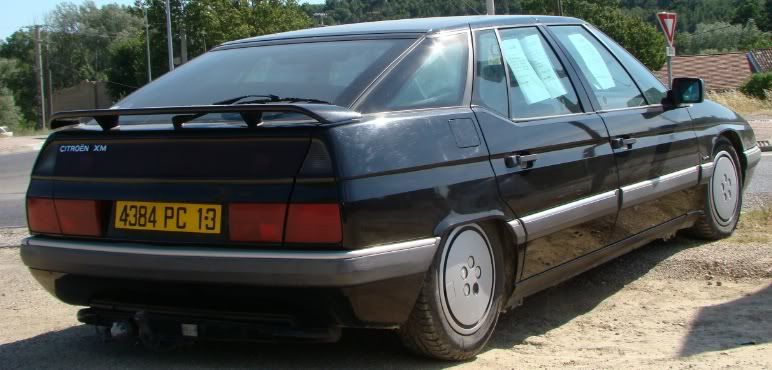
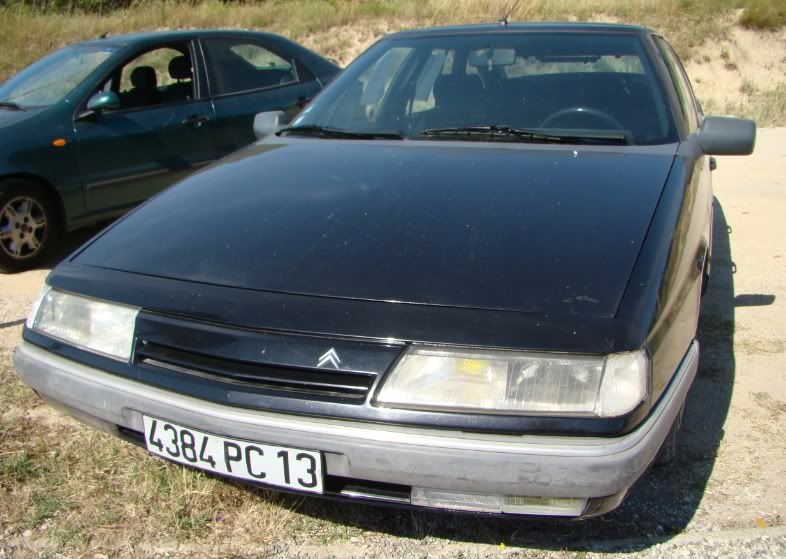




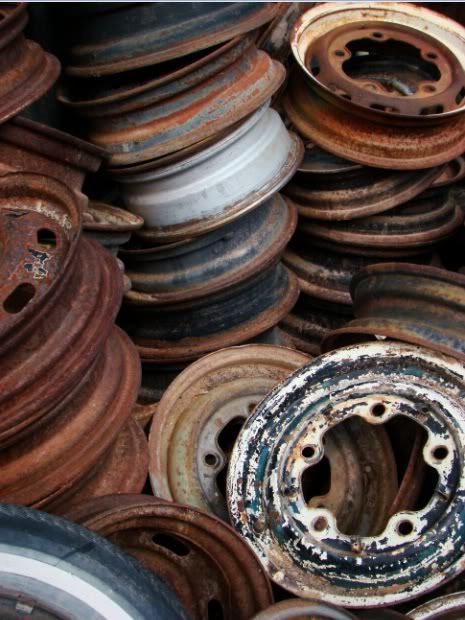



 All the cars in the lot are for sale, though some are already spoken for. "I haven't sold a Bug in a while. These things go in trends; sometimes it's Ghias, sometimes it's Bugs. Right now the Buses are the most popular."
All the cars in the lot are for sale, though some are already spoken for. "I haven't sold a Bug in a while. These things go in trends; sometimes it's Ghias, sometimes it's Bugs. Right now the Buses are the most popular."
 "The Citroen Ami 6 has been parked since 1971." The Ami 6 was imported to the US only for people high placed in Citroen and not available for the commonfolk to buy.
"The Citroen Ami 6 has been parked since 1971." The Ami 6 was imported to the US only for people high placed in Citroen and not available for the commonfolk to buy. Several Type 3s of all body styles are waiting for somebody to pick them up and restore them, including two rare notchbacks:
Several Type 3s of all body styles are waiting for somebody to pick them up and restore them, including two rare notchbacks:



 A 911T, one of two Porsches in the lot:
A 911T, one of two Porsches in the lot:






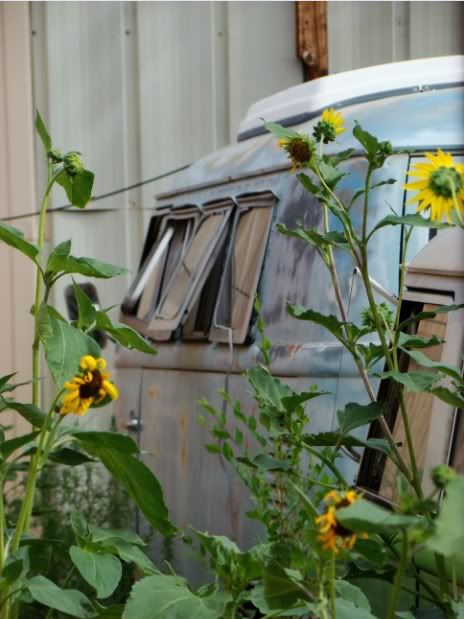
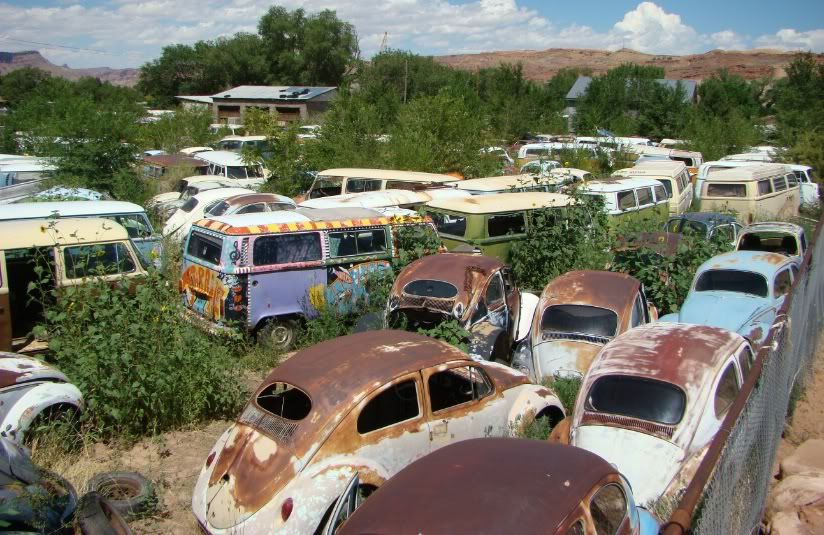



 And this well-preserved Type 1 has been off the road since 2004 and is watching pickup trucks go by a few hundred miles west of Dinosaur. The story from the owner is that "it's not for sale BUT if you call me in a few months, who knows, we might make a deal!" - I sure hope so.
And this well-preserved Type 1 has been off the road since 2004 and is watching pickup trucks go by a few hundred miles west of Dinosaur. The story from the owner is that "it's not for sale BUT if you call me in a few months, who knows, we might make a deal!" - I sure hope so.
